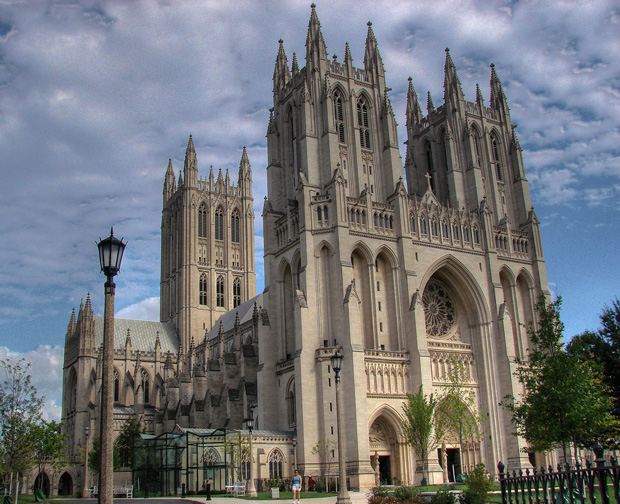Wednesday, January 11, 2012 9:07 PM

 In 1907, the first stone was laid in the construction of Washington National Cathedral and in 1990; the last stone was set in place. As I began work at the Cathedral in 2005, I soon learned that over the course of its nearly one-hundred years of existence, a comprehensive survey of the building fabric had never been made. Understandably, for the first eighty-three years, most of the attention was devoted to completing construction of the Cathedral, not preserving its fabric. Yet with construction now complete, many in Cathedral governance felt it was time to turn its attention away from the building and devote its resources in other directions. As a result, the prevailing attitude toward preservation was one of reaction, rather than pro-action. In other words, wait for something to break and then fix it.
In 1907, the first stone was laid in the construction of Washington National Cathedral and in 1990; the last stone was set in place. As I began work at the Cathedral in 2005, I soon learned that over the course of its nearly one-hundred years of existence, a comprehensive survey of the building fabric had never been made. Understandably, for the first eighty-three years, most of the attention was devoted to completing construction of the Cathedral, not preserving its fabric. Yet with construction now complete, many in Cathedral governance felt it was time to turn its attention away from the building and devote its resources in other directions. As a result, the prevailing attitude toward preservation was one of reaction, rather than pro-action. In other words, wait for something to break and then fix it.
I immediately set to work reversing this attitude by raising the awareness of Governance to its responsibility of being good stewards of the historic landmark it had inherited, by teaching that a policy of deferred maintenance is more costly than preventative maintenance, and encouraging them to be more fiscally responsible by creating a prioritized list of preservation capital projects, with associated costs, for the next five, ten and fifteen years. With this specific information in hand, a more responsible strategic budget could be established and the necessary funds set in place for any forthcoming major projects. Finally after pressing the issue for two years, Governance was convinced to release the necessary funds allowing me to proceed with this important study.
Fortunately, the Cathedral maintained good records of its construction history, through drawings, specifications, correspondence, photographs and annual maintenance logs. However, the information is not centralized nor easily accessible, which means it is used rarely. Working with a historic architectural consultant, we sifted through all of the information and, after interviewing a number of people who participated in the construction and/or ongoing maintenance of the building, assembled an accurate and comprehensive history of construction in both written and graphic form.
The team then inspected the entire Cathedral, assessing the condition of all materials, assemblies and systems, noting any deterioration, failures and potential failures. A number of specialists, including stone, stained-glass, metal and wood conservators, and roof and moisture protection specialists participated and provided recommendations. Detailed technical analysis was made of selected materials and practices including mortar, stone repair, sealant use, waterproofing membranes, and lead roofing. After a year, a comprehensive conditions report was assembled indicating every aspect of the building fabric: material descriptions, maintenance history, present condition, level of attention required and recommendations going forward.
Once the data was assembled, I then prioritized the items based on level of urgency and worked with the consultants to attach an estimated budget to each item. I also evaluated the project list based on projected annual budgets for the next five years and current maintenance staff size and skill sets. In the end, I assembled the information into distinct packets for specific audiences in both print and digital forms. Governance received a summary of the conditions report, the prioritized project list and associated budget projections, all in a language that was comprehendible and useful for strategic planning and budgeting.
For those concerned with more technical aspects of the survey and its applications, they received the detailed conditions report, the prioritized project list and associated budget projections, which provided specific background and application information in an accessible form.
For the first time in Cathedral history, both Governance and Maintenance had the technical and budgetary information it needed to adopt a policy of pro-active preservation of the Cathedral.